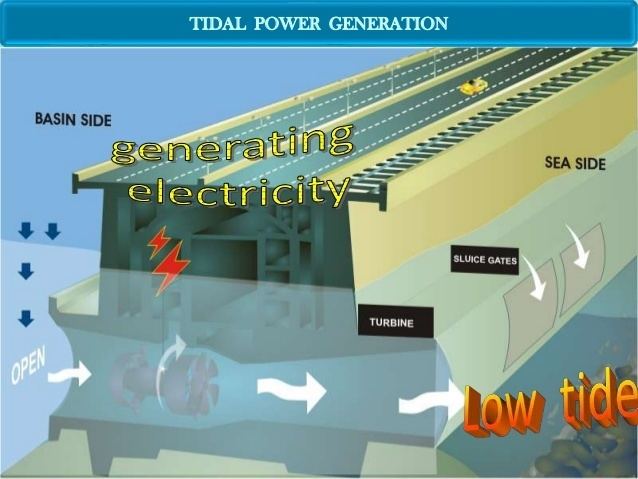 | ||
Kalpasar project a short film
The Kalpasar Project envisages building a dam across the Gulf of Khambat for establishing a huge fresh water reservoir for irrigation, drinking and industrial purposes. A 10 lane road link will also be set up over the dam, greatly reducing the distance between Saurashtra and South Gujarat.
Contents
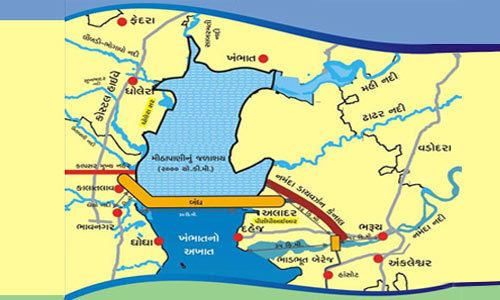
‘Kalpasar’ means a lake that fulfills all the wishes. The word originating from Hindu mythological ‘Kalpa Vriksha’ (Devanagari: कल्पवृक्ष) – wishing tree.
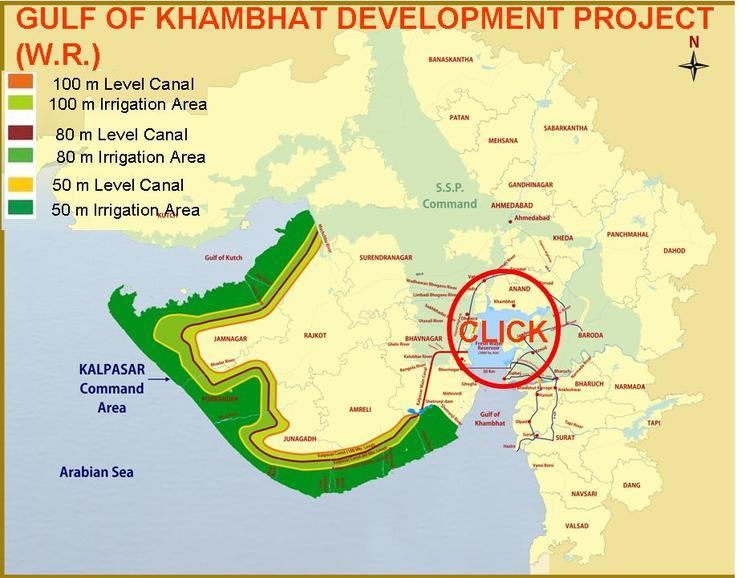
History
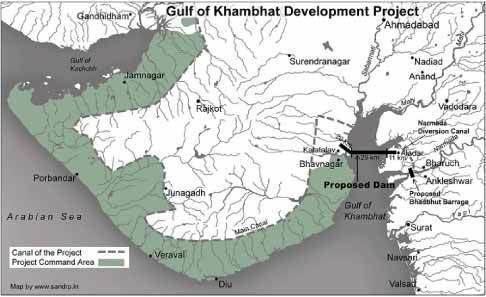
The Gulf of Khambhat was identified as a promising site for tidal power generation by UNDP Expert, Mr. Eric Wilson in the year 1975. Successive governments were then presented in details the possibility of a project, aptly named Kalpasar Project by its visionary Dr. Anil Kane, who conceptualised it in 80s as a feasible project. In 1988-89 a reconnaissance report was prepared for the dam across the Gulf of Khambhat. The report concluded that, assuming sound foundation conditions, the closure of the Gulf was technically feasible.
It was reported that construction will begin in 2014.
Objectives

The Kalpasar aims at the creation of a fresh water reservoir in the Gulf of Khambhat by the construction of a dam connecting the east and west bank of the Gulf. In the reservoir the runoff from Sabarmati, Mahi, Dhadar and Narmada will be stored, together with the waters from the Saurashtra rivers discharging into the Gulf of Khambhat. The stored waters are to be used for irrigation, water supply and industrial requirements in the Saurashtra region. Kalpasar is considered the evident solution for solving on the short as well as on the long term the threatening drinking and irrigation water problems in Saurashtra.
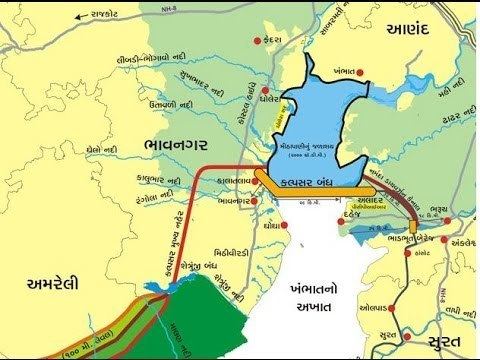
Once the Gulf is closed, water levels within the reservoir can be controlled while the tidal fluctuation outside the reservoir continues and, hence, can be harnessed for the generation of tidal energy.

In addition to fresh water storage and tidal power generation, Kalpasar also aims at land reclamation, transportation improvements and fisheries development. In accordance with this project, a mega fresh water reservoir will be constructed on the upstream side of the dam by impounding the surplus waters of numerous rivers.
This project, if implemented with dedication and without corruption, will resolve four vital problems of the State of Gujarat which are water, electrical power, road-rail transport and development of ports.
Economics
A state government release said the Rs 55,000 crore (US$11.7 billion) project, to be completed by 2020, will have a vast fresh water reservoir with gross storage of 16,791 million cubic metres of water, 64 km long dam across the Gulf of Khambhat connecting Ghogha in Bhavnagar with Hansot in Bharuch District, reducing the distance between the two by 225 km. It will have tidal power generation house with an installed capacity of 5,880 MW. Another estimate was given by the Government in October, 2010 which stated the proposed dam to be built just north of Bhavnagar in the west to Alandar in Dahej on the east.
